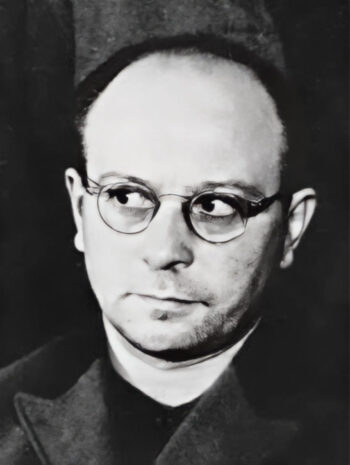Kaindl, Anton

Anton Kaindl (14 July 1902 – 31 Aug. 1948), SS Standartenführer, was the last commandant of the Sachsenhausen Camp from 1 September 1942 until 22 April 1945. Together with 15 other defendants, he was put on a typical Stalinist show trial staged in Berlin by the Soviet occupational authorities from 23 October to 1 November 1947. The trial assumed as given that the National-Socialist regime worked out “a plan for the mass extermination of political opponents of Nazism,” in fact, “for the mass destruction of men” in general, of which the Sachsenhausen Camp allegedly was one of many camps for this plan’s implementation. Kaindl’s defense lawyer acted and argued like a second prosecutor. The defendants willingly or even enthusiastically embraced and confirmed even the most outrageous charges against them, including that Sachsenhausen was a death camp equipped with homicidal gas chambers. For instance, Kaindl repeatedly started answering questions put to him about executions and mass murder with “Yessir!”
Kaindl “confessed” not only that gas chambers (plural) as a mass extermination site were introduced by him personally – although a Soviet investigative commission found only one “gas chamber” in the camp, and it was a tiny fumigation cubicle – but also that, under his command, about 42,000 inmates were killed and some 8,000 more died of starvation, although documents show that during the camp’s entire existence since 1936, a little less than 20,000 inmates died altogether. (The Soviets claimed a total death toll of 100,000 for this camp, half of it during Kaindl’s time, which began in August 1942.)
The absurdity of the charges levied against Kaindl and his co-defendants during that show trial become crystal clear when he was asked whether he received orders to destroy the camp in order to erase the traces of his crimes. Here is Kaindl’s frenzied, enthusiastic response:
“Yessir! On 1 February 1945, I had a conversation with the head of the Gestapo, Müller. On that occasion he conveyed to me the order to destroy the camp by artillery fire and air attack or by gassing.”
None of it happened, of course, but not because it was impossible to implement, as Kaindl claimed, but because such utterly insane methods would not even have occurred to a fool. Or take his “confession” to another Soviet-invented “planned crime,” which also didn’t happen, not the least because it was unfeasible:
“On April 18 [1945], I received orders to load them [the remaining Sachsenhausen inmates] on barges and bring them along the channel of the river Spree into the Baltic Sea or the North Sea and to scuttle them there in the open sea.”
Needless to say, there is no trace of such an insane scuttling order ever having been given.
Stalinist methods to make any defendant enthusiastically embrace and confirm any accusation are legendary, and the transcript of this show trial confirms this clearly. Sadly, orthodox historians take this trial’s claims and conclusion seriously.
Kaindl was found guilty, shipped off to the GULag, and died there after just six months.
(For more details, see Mattogno 2023d; 2016e, pp. 150-180.)

You need to be a registered user, logged into your account, and your comment must comply with our Acceptable Use Policy, for your comment to get published. (Click here to log in or register.)